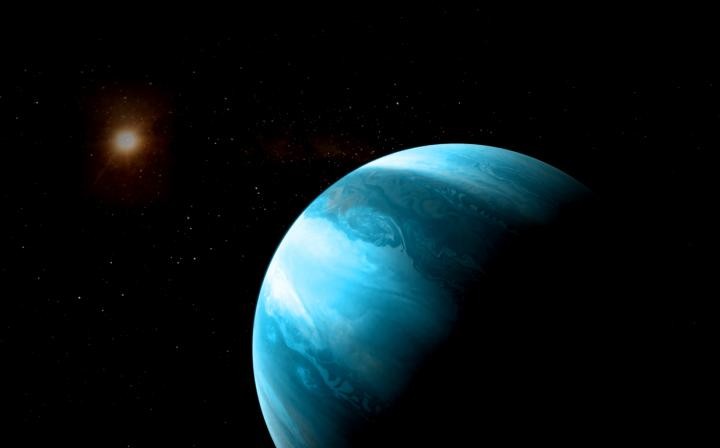The year 2020 may have been the bringer of bad luck, but it was indeed a treat for sky gazers. Space watchers have already showered the year with several unique celestial activities, and it appears as though the strongest for the last time.
The world is due to see the Great Conjunction of Jupiter and Saturn on December 21, 2020. The planets will align as similar to each other as they have been since 1623.

Jupiter ke planet with a blueish colour orbiting a cool red dwarf.
What is the Great Conjunction?
Conjunction is actually the night sky's visibility of two things appearing to be quite similar together. You will see the Moon in combination with a planet nearly any month when it begins to move closer. There are rarer celestial conjunctions.
So conjunctions are delusions, phenomena of line-of-sight that don't necessarily exist. After all, from an estimated 238,900 miles back, the Moon circles Earth and seems to be near to the planets that are very far farther distant (for instance, Mars is currently around 44 million miles from Earth).
What is Behind the Great Conjunction?
The planets' changing orbits cause conjunction. Although it takes 29 Earth-years for Saturn to complete one full orbit around the planet, it takes 12 Earth-years for Jupiter. The arithmetic is simple; they would share the same portion of the night sky every 19 years as seen from Earth, which zips much faster around the Sun.
When is the 'Great Conjunction 2020?'
On Monday, December 21, 2020, this "Great Conjunction 2020" will occur as Jupiter and Saturn appear 0.06º apart in our post-sunset night sky. That's around the same as the Venus-Jupiter conjunction earlier this year. But this is the strongest planetary conjunction for over four years.
In the case, as one bright point of illumination, Jupiter and Saturn would begin to glow in the southwest at dusk.
While they will seem super-close on the particular date of December 21, 2020, in reality, you can take advantage of some open skies you get on either side for a few evenings.
How to Find Jupiter and Saturn in The Night Sky?
It's sparkling at a magnitude of -2.2 and would be easy to see (although don't compare it with reddish Mars in the eastern sky, which is almost the same brightness). Look southwest to locate Jupiter. The dimmer Saturn, to the left or farther east of Jupiter, is a little more complicated. Tonight, the two planets are around 5 ° apart. There's a simple way to make sure you're seeing Saturn; put your arm out, put your middle three fingers together, and put your right-finger on Jupiter. There will be Saturn at the other end.
There is no other combination of the pair until October 31, 2040, when the two would travel slightly further apart in the pre-dawn night sky, Jupiter and Saturn's nearest conjunction after 1623.
That makes your attention worthy of the once-in-a-generation' Great Conjunction 2020' coming up on December 21, 2020. Get your calendars marked!
ALSO READ: Five Stellar Yet Extreme Facts About Space
Check out more news and information on Space on Science Times.












![Sat-Nav in Space: Best Route Between Two Worlds Calculated Using 'Knot Theory' [Study]](https://1721181113.rsc.cdn77.org/data/thumbs/full/53194/258/146/50/40/sat-nav-in-space-best-route-between-two-worlds-calculated-using-knot-theory-study.png)

